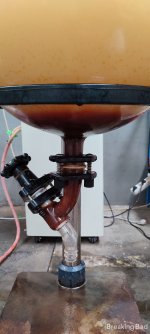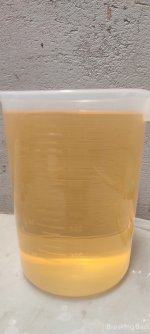1. Steam distillation will separate the amine mixture very poorly, vacuum distillation is the best solution and is quite fast in the presence of a strong vacuum.
2. I'm afraid to lie, but as far as I remember, after a single separation of isomers, the final composition of the "d-isomer of tartrate" is about 80-90 percent of the d isomer and the rest is the l isomer.
3. I made glass without separation of isomers from a mixture of alcohol and a small amount of water + additional components, I got a glass monolithic mass, cracks appeared when it dried completely, especially if the crystals were washed with acetone (do not repeat my mistake), but the mass remained transparent. In my case, I did not use glassware for crystallization and other nuances, I spent 2-3 months on the selection of a technique.
Before this method, I tried to make from a melt of salt, monolithic pieces were obtained, but not transparent, only blotches of transparent crystals. There was an idea to do something like zone melting.
Why do I need to prove something to you? I shared my experience, if you are not interested in it, this is your personal business. Do you really think that I need your 250 grams, it doesn’t matter to me at all, I won’t mess around with trifles. Consumers do not give an objective assessment of the purity of substances, it is enough to ask them what is better mephedrone powder or a large crystal, guess what they will answer ... Half of the effect of drugs (stimulants for sure) is their appearance)))
I almost forgot, if you plan to distill in a vacuum, then you definitely need an along spider, since there will be light-boiling fractions of garbage, with the help of a spider you can change the receiving flask without stopping the distillation of the amine, similar to a revolver, but instead of cartridges, flasks.



